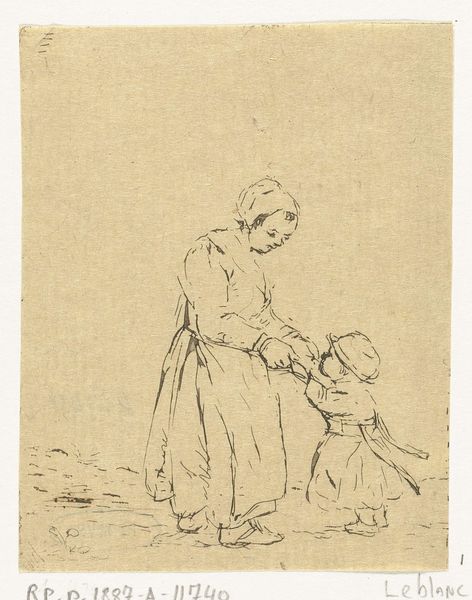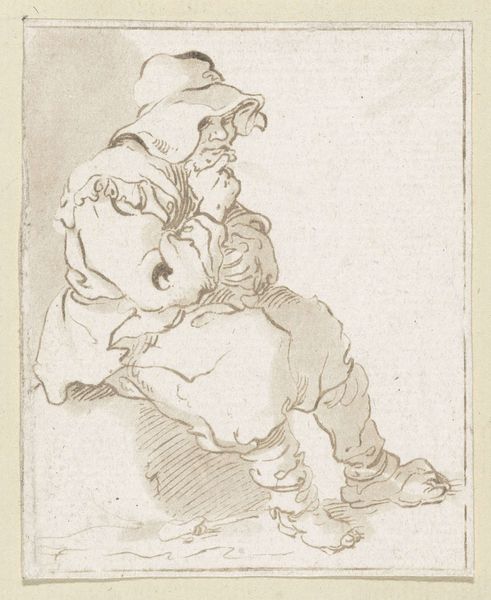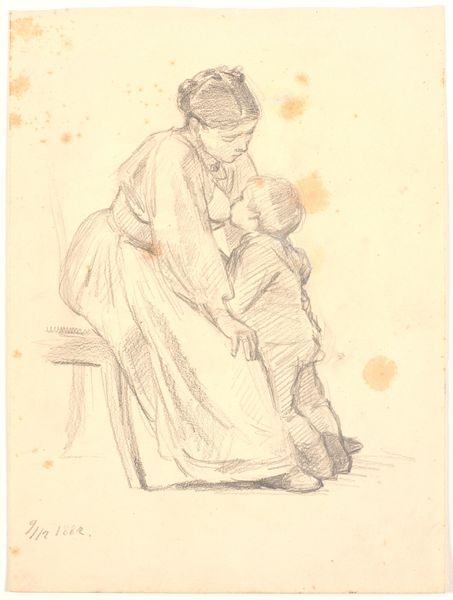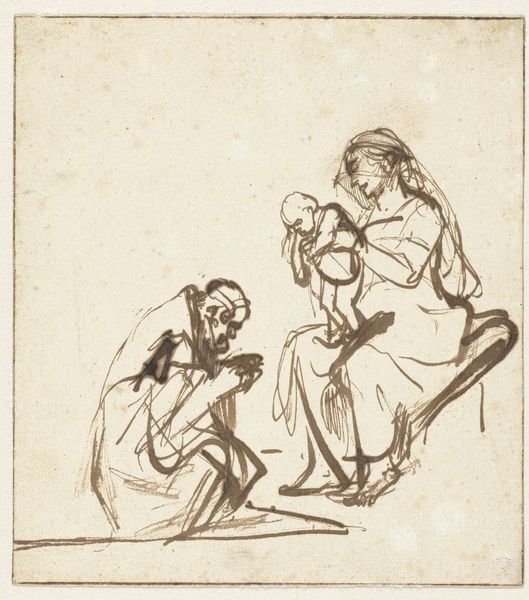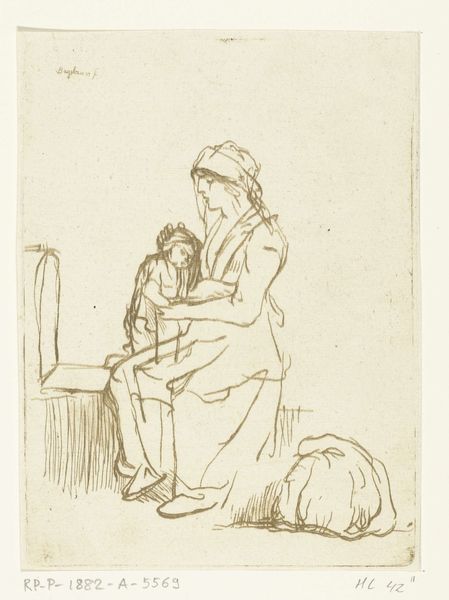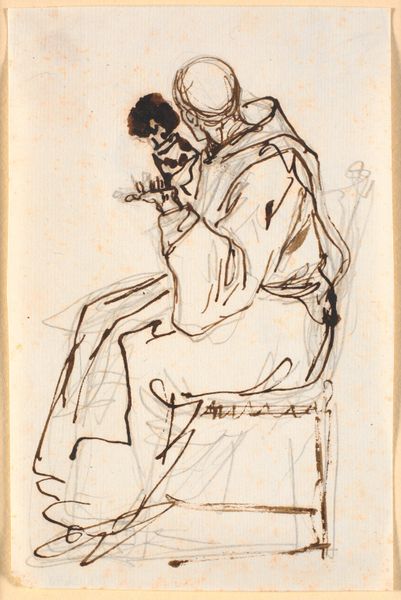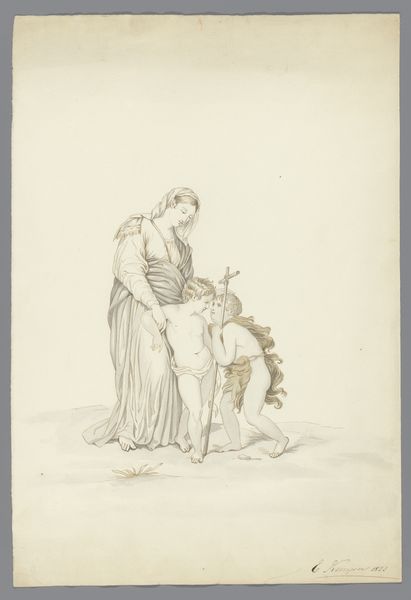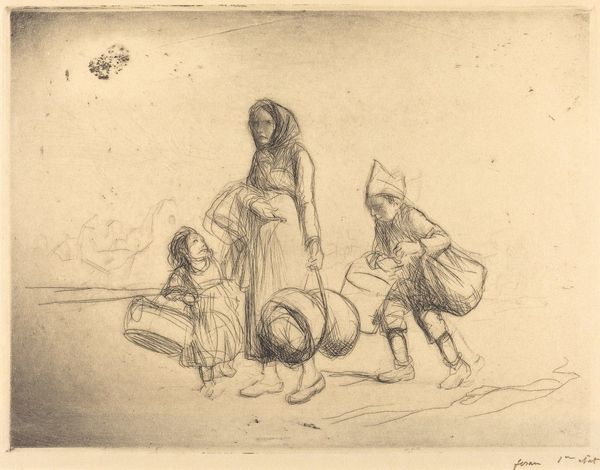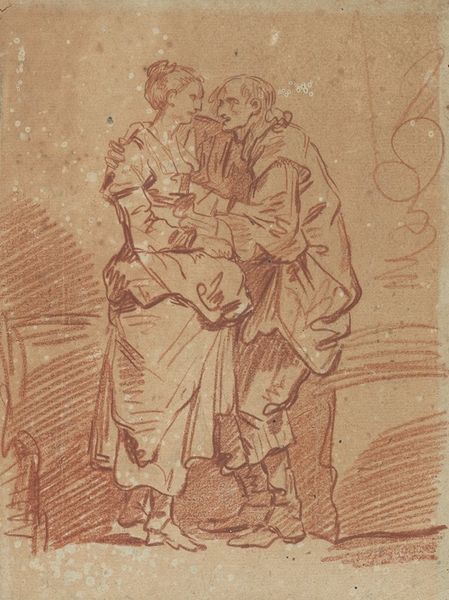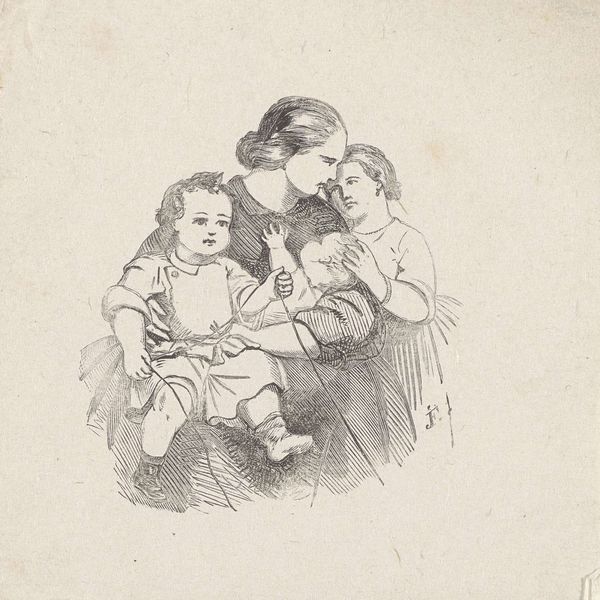
drawing, pencil
#
portrait
#
drawing
#
amateur sketch
#
imaginative character sketch
#
toned paper
#
light pencil work
#
baroque
#
pencil sketch
#
personal sketchbook
#
pencil
#
sketchbook drawing
#
pencil work
#
genre-painting
#
sketchbook art
#
fantasy sketch
Copyright: Public Domain: Artvee
Editor: Here we have Rembrandt van Rijn's "Woman Seated on the Ground with Two Children," made around 1635 to 1640 using pencil on toned paper. The scene has a really intimate, quiet mood. What stands out to you when you look at this piece? Curator: What I see is a powerful commentary on the realities of motherhood in 17th-century Netherlands. The loose sketch hints at the lived experiences of women – their daily lives, which often went unrecorded in grand history. How does this drawing challenge traditional representations of women in art history? Editor: Well, it’s definitely not the idealized portraits you usually see. She's not a goddess or royalty, just a woman, likely poor, sitting on the ground. It feels very human and vulnerable. Curator: Precisely. And it’s crucial to remember Rembrandt’s own social context. How might his own experiences and observations of the world around him – a rapidly changing world marked by increasing urbanization and growing economic disparity – have informed his decision to depict such a subject? Consider, too, the religious context – the emphasis on ordinary people. Editor: That's a good point. The simplicity almost has a religious feel to it, like a Madonna and Child, but in an everyday setting. Did Rembrandt often depict everyday life in this way? Curator: Yes, his unflinching eye saw value and beauty in all of humanity. He saw that the working class was worthy of being subjects of art, countering social and artistic conventions of the time. So, looking at this sketch now, what does it tell us about how art can function as a form of social commentary? Editor: I guess it shows that even quick sketches can make powerful statements about society and who is worthy of being seen. Thanks for the insight, it really helps to see the piece in a broader context. Curator: Absolutely, and hopefully this will encourage you to see how art intertwines with life!
Comments
No comments
Be the first to comment and join the conversation on the ultimate creative platform.
